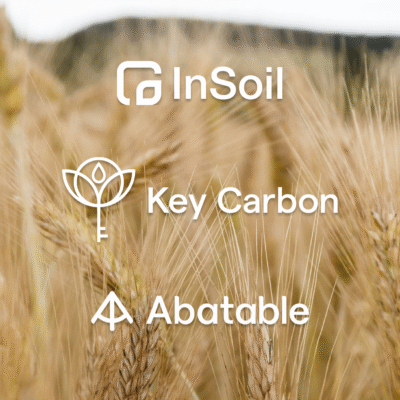In the face of mounting pressure for companies to address their carbon footprint, the challenge of reducing Scope 3 emissions looms large. These emissions, often beyond a company’s immediate control or considered hard-to-abate, can slow down action.
But the planet can’t wait. As highlighted by the concept of the time value of carbon, carbon emissions released today have a greater impact on climate change compared to emissions released in the future. This concept stems from the fact that the Earth’s climate system responds to changes gradually over time, leading to the accumulation of greenhouse gases in the atmosphere. Consequently, the longer we delay action, the bigger the challenge becomes and the more difficult it becomes to mitigate the adverse effects of climate change.
The more we delay action, the steeper the journey to 1.5 degrees becomes:

Source: Robbie Andrews, CICERO and Carbon Brief.
Rather than succumbing to inaction, our new series on building your carbon procurement strategy will break down and provide recommendations for implementing climate strategies that align with the time value of carbon by strategically supporting projects in the voluntary carbon market (VCM).
Why build a carbon credit purchasing strategy today?
- Despite current policies around the world, we’re still on track to raise global temperatures by 1.5C. Companies can use sustainability budgets today to make an impact, scale cost-effective nature-based solutions, help reduce the “green premium (the added cost of choosing a clean technology over one that emits more greenhouse gases)” gap and ensure the adoption of carbon dioxide removal solutions that are needed at scale by 2050.
- CDP data shows there is a positive correlation between internalising a carbon price and taking action to reduce emissions. Setting an internal price on carbon which can be entirely or partly spent on supporting climate projects serves the double benefit of aligning climate strategies with the time value of carbon while incentivising faster value chain decarbonisation.
- Carbon credits are a critical component of any net zero plan, especially for hard-to-abate residual emissions. By strategically purchasing carbon credits today and locking in prices and volumes through multi-year purchase agreements or direct investments, companies can secure the inventory necessary to achieve their climate goals and save on potentially high carbon prices in the future.
Four Outlooks for Companies
Taking a proactive approach to procuring carbon credits today contributes to scaling and maturing the VCM, a market that will be needed by most companies to claim net zero. If companies choose to ‘wait and see’, the quantities of carbon removals needed to claim net zero under initiatives such as the Science Based Target initiative may simply not exist. On the other hand, if companies take proactive steps to procure from the VCM, they can contribute to scaling the market and securing their supply of much-needed removals and other credits.

7 Key Principles when developing a science-aligned carbon strategy
- Embrace the concept of the time value of carbon by supporting climate projects today which avoid, reduce or remove greenhouse gas emissions
- Carbon credits are not a substitute for decarbonisation of a company’s own emissions
- Only purchase high-quality carbon credits, which provide evidence of high additionality, permanence, robust GHG measurements, no leakage, and do no harm to the environment and communities.
- Work with reputable counterparties with transparent margins to ensure that your budget supports climate projects rather than intermediaries’ operations
- Transition to permanent carbon removals in the long term to align with net zero guidance.
- Ensure carbon credits support livelihoods and enhance biodiversity
- Apply radical transparency in disclosures to follow best practices
Conclusion
Upcoming posts in this series will break down the steps we recommend companies take when setting up their carbon strategy to ensure it is aligned with the latest science, helps them meet their climate goals, and has buy-in from internal stakeholders.
Can’t wait? Grab our procurement guide and watch our corresponding webinar.































































































